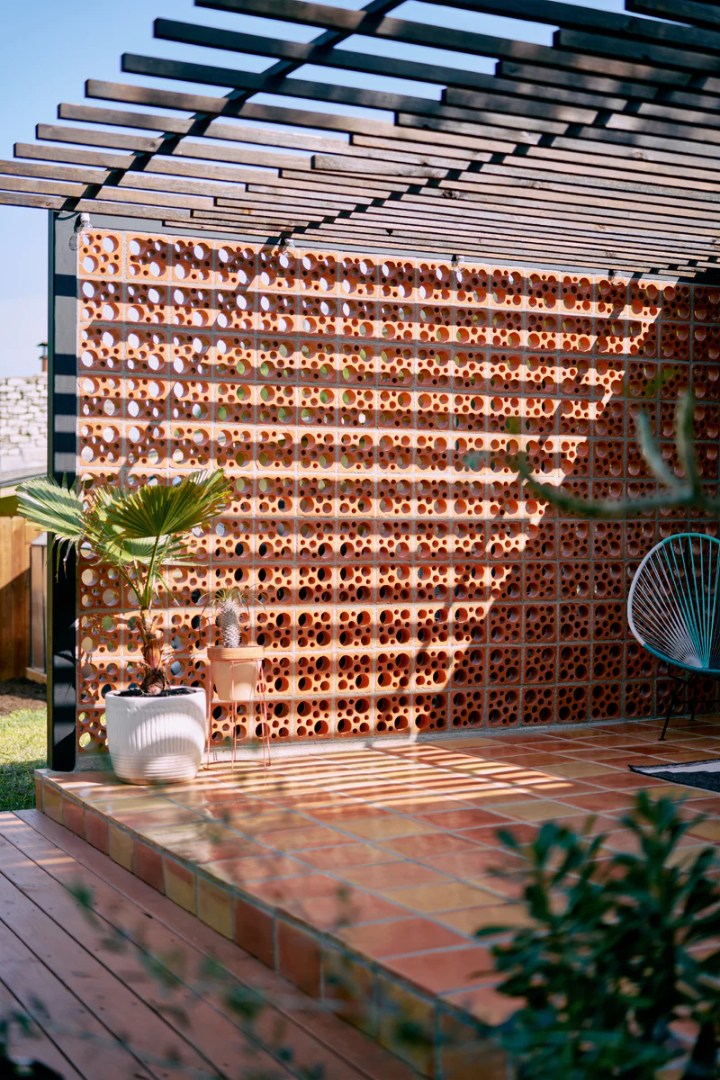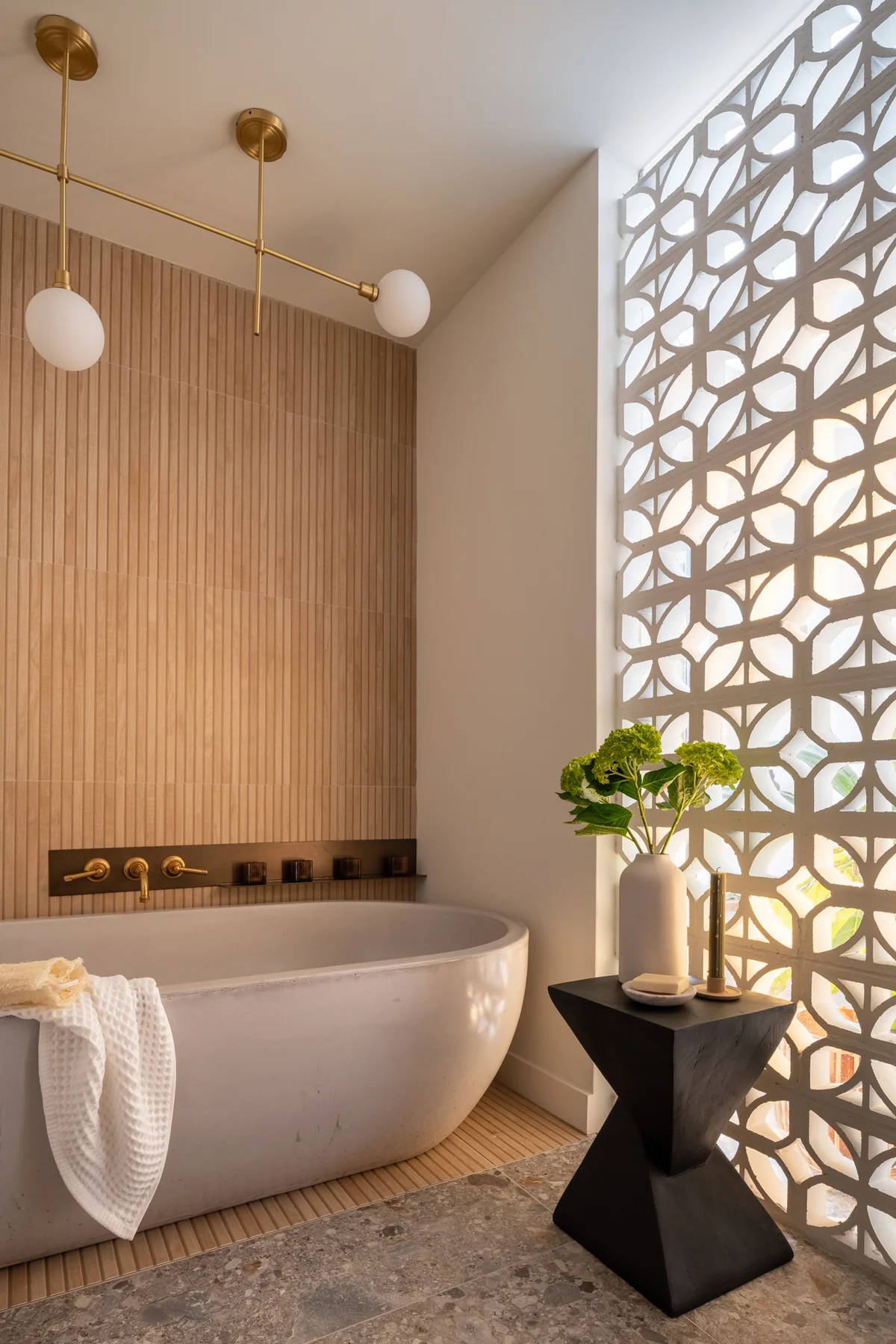How to make your DIY project using Terracotta Breezeblocks
The best material for all your DIY adventures
By Clay Imports
The use of breeze blocks is one of the most recent and popular design trends because they are easy to work with and you don’t have to worry about the structural characteristics of building with them; they mostly serve an aesthetic purpose. But some people don’t like how these blocks are only available in gray with square holes. That’s where Clay Imports save the day again. Our collection of clay breeze blocks is one of the best available in the market and we will explore some tips and tricks for you to do your own DIY projects.

Why should I use Clay Breeze blocks?

Design by Create Atelier | Photography by Robert Tsai
First, clay breeze blocks are made from natural clay, just like all our tiles, and they offer a lot of advantages in various applications.
Clay breeze blocks are known for their long-lasting performance: they are resistant to weathering, UV exposure, and corrosion, which can lead to a longer lifespan and reduced maintenance costs. You can also seal your blocks which will make your blocks more resistant to these factors.
Clay blocks have better thermal insulation properties than concrete, resulting in better energy efficiency for buildings. They can help regulate interior temperatures, reducing the need for heating and cooling, and thus saving on energy costs. Also, clay breeze blocks are made from natural clay, which typically results in a lower carbon footprint product and less hazardous materials involved in their production, such as lead.
Finally, clay breeze blocks have a warmer and more natural appearance due to their earthy color and texture. This also means that they are easy to paint if you decide that the natural clay color does not entirely fit your design vision.
Considerations while working with clay breeze blocks
We get a lot of questions about installing clay breeze blocks. Although they are very easy to work with, there are some considerations you have to keep in mind while working with these blocks. First, like all out tiles, our clay breeze blocks are handmade. Handmade tiles and blocks exhibit natural variations, which are inherent traits of natural products like Terracotta. These variations are not defects but rather a natural part of the product. We highly recommend ordering samples before making a final purchase to confirm and appreciate these natural variations in each tile.
Next, while working with breeze blocks you always have to adhere them: given the fact clay breeze blocks are irregular and their size and thickness can vary from block to block, dry stocking translates into a dangerous and unstable project.
You have a lot of options to glue clay breeze blocks together. The most popular one is masonry cement. This is the same adhesive you’d use to build any brick wall and is the most easy to get and to prepare; you just need the powder and some water and you are ready to go.
As we mentioned before, clay breeze blocks have a high variance of size and thickness from block to block -this is part of their charm! Because of this variance, you should always have a grout spacing of at least a quarter of an inch; this will guarantee your construction is strong and will resist for many years.
You can also use regular tile adhesive to assemble your clay blocks. You will have to stick your block with some kind of spacer system and you will have a void in every grout joint. In exchange, using tile adhesive will allow you to use regular tile grout to fill this void, which translates into more color grout options, instead of the natural gray from masonry cement.
If you want to build a breeze block wall from scratch and this wall is not going to have a frame to reinforce it, you should also consider using steel rebars between the vertical grouts. They are used especially when your building within a frame or when your structure doesn’t have a wall on either side.

Steel rebars will help the structural strength of your wall
DIY ideas with clay breeze blocks
Clay breeze blocks are perfect to build an accent or separation wall either indoors or outdoors. They have a lot of designs and finding one you love is the first step before building yours. We helped Allie from Stampworthy goods building one in her backyard. She wanted to do a full backyard renovation and it was the perfect chance to use clay breeze block. You can read the whole process in this article.
Urban Landscape Group (ULGTX) took our Escala Breeze Block to add a modern design into the classic front yard fence. This project was led by renowned Cobb Development and the result is one of the best projects we’ve ever seen. You can learn more about this project here.
Of course, you don’t need to always build some sort of a wall. Our friends in Mayawell decided to twist, quite literally, their breeze blocks and build a front desk using our petalo clay breeze blocks. This project shows you the versatility behind this construction material and we hope it will inspire you to find new ways to use them.
As you can see, the possibilities are endless while using clay breeze blocks and you will be extremely satisfied both for the results and the satisfaction of doing it yourself! Don’t forget to take a look at our complete clay breeze block guide as well as our resources blog so you can be an expert in breeze block construction.
We also invite you to take a look at our Clay Care products.These maintenance items have been carefully tested with our products, and they are designed to preserve your tiles' beauty, ensuring their longevity and durability. From sealers to cleaners, purchasing these maintenance items together with your tiles not only simplifies your order but also prepares you to enjoy your tiles for a long time.
And if you have more questions, don’t forget to reach out to us at contact@clayimports.com






